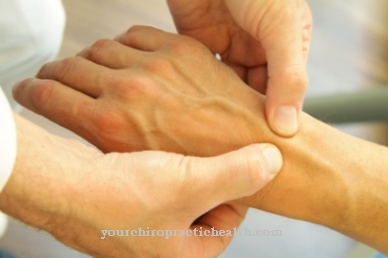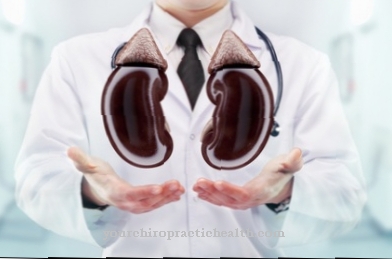More or less violent effects on the musculoskeletal system, which includes muscles, tendons, fascia and joints, represent sprains, contusions and strains. A sprain can only occur in joints. The ankle and wrist are preferred here. Contusions, on the other hand, affect the soft tissues, the muscles and the tendinous plates, the fasciae, that are often above them. You only suffer strains in the muscles and their ends, which are known as tendons. Each of the mentioned injuries differs from the others by specific characteristics. The behavior and the treatment are therefore also different.
Causes of strains

What can you do yourself if you suffer an injury of this type?
Strains compete Muscles and Tendons on as a result of excessive or incorrectly controlled stress, usually when the muscles are in a poorly trained state. Willingness to injure is also given if residual injuries have not been completely cured. But also existing focal foci, i.e. foci of pus, as they can mostly occur on teeth, tonsils, paranasal sinuses, appendix, etc., often repeated strains are observed by so-called scattered foci on distant parts of the musculoskeletal system.
treatment
If there is no renovation here, permanent improvement can hardly be expected. Strains differ from fiber tears in that there is no separation (tears) of the tissue fibers, but only an overstretching. These differences are clearly recognizable by the following symptoms:
Muscle strain
- Increasing pain on exertion, but allowing movement, albeit reduced. After a break, major complaints first of all, which then subside noticeably in the subsequent movement phase.
- There is no blue-red discoloration and hardly any swelling is visible.
- A pain-sensitive, circumscribed area that reacts to pressure can be felt and is of a harder consistency than the surrounding tissue. The stretching pain is also symptomatic.
- A controlled movement is soon possible again, with optimal treatment the recovery time can be relatively short.
- The healing takes place without a noticeable tissue scar or muscle callus on the affected area.
Torn hamstring
- Spontaneous pain such as a knife stab or stone throw at the injured area, which usually makes further normal movement impossible.
- Usually a visible bruise occurs, which often shows discoloration below the injury site.
- A muscle gap can be felt at the injury site, which is very painful when pressed. There is a strong impediment to movement and defensive tension, especially when the muscles are stretched.
- Controlled movement and loading is usually only possible after the crack has healed. The recovery time takes much longer than with a muscle strain, approx. 4 - 8 weeks.
- After healing, a noticeable scar call remains.
























.jpg)



